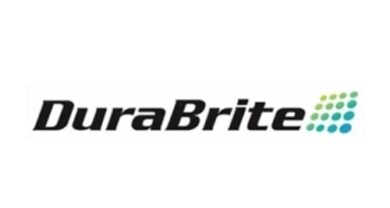State of the Industry webinar now available
The boating industry is growing steadily, with more growth ahead.
That was the consensus sentiment of the panelists on this year’s Boating Industry State of the Industry webinar Wednesday.
“While we’re not selling back at levels we were during the 80s and 90s, we’ve been in solid recovery,” said Vicky Yu, director of research and industry statistics for the National Marine Manufacturers Association. “Sales have been rising for the past five consecutive years and I’m expecting we’ll end 2016 up another 5 to 7 percent.”
Yu was joined on the panel by Peter Houseworth, director of client services for Info-Link Technologies, and Noel Lais of Spader Business Management.
“In 2015, we are basically seeing our fourth consecutive year of year-over-year growth, which has been running in the mid-to-high single digits, and for 2015 was slightly less than 9 percent,” Houseworth said.
Lais reported similar trends from the dealers that work with Spader.
“Since 2010, each year we’ve had some steady growth, up to 2015 where we’re at about 6.5 million [in new boat sales],” he said. “Not quite up to the level where we were at the peak in 2007, but headed in that direction.”
You can view and listen to the full webinar below or download the slides here.
We also ran out of time to answer some of your questions, so we asked our panel to offer some insight after the webinar. Here are those answers:
Besides Hispanics, what about reaching the affluent Asian market?
Houseworth: The Asian market in the US is extremely small. The other thing is that it is widely dispersed throughout the country with no extremely large geographic concentrations, so it is difficult to target effectively from a media standpoint.
It seems inventory levels are tight for many dealers. Is that happening nationally?
Lais: Good used inventory is tight in most markets
Houseworth: Our Days Inventory Report suggests that the distribution channel right now is healthy and has been very consistent within the various boat categories. If field inventory was high, this would be elevated, if it was extremely low then it might suggest that it was tight but right now things look efficient and normalized.
Noel said sales were up double digits through July, but SSI data shows a 7 percent decline. Why the discrepancy?
Lais: Sales were up strong double digits thru May as reported in the Market Data Book. However, they have slowed in June and July. At the end of June, our dealers reported sales about 14 percent above last June. [As for the difference] we are comparing a different base of dealers
What impact are boat rentals/boat sharing programs having on boat sales?
Lais: It is a popular topic in our 20 Groups. Some dealers feel these programs are cutting into their sales. Some dealers feel these programs are bringing customers to boating that might otherwise not come. I haven’t seen any specific measures that support one perception or the other.
Houseworth: On boat rental/sharing, we surmise that there may be some short term negative effects on boat sales, but there are far more upside benefits in the medium to long term.
In the short term, keep in mind that the effect on new boat sales is likely minimal as most of these people would have purchased pre-owned anyway. Secondly, we believe that retention rate in boating ultimately will be better served by the club/boat rental option. It significantly lowers the barriers to entry to boating and provides people with more opportunities to participate.
By contrast, in the ownership model, if they purchased new and decide that they don’t like it or use it enough and they want to get out, they are potentially looking at a significant haircut on the boat price. If they purchased pre-owned and end up inheriting someone else’s “problem,” they are likely to get turned off. Either of these scenarios end up with a been there, done that and they are likely lost to us forever or at least for an extended period of time.
In our opinion, a decently run club/rental format should (in theory) allow more consumers better access to the boating experience, but limits some of the downside risks. For example, if they aren’t using it enough or decide they don’t like it they just stop their membership without the end stage negative implications. If they are in for an extended period of time and contract a serious boating bug, the likelihood that they will purchase their own boat would we think go up. Moreover, they are likely to have a better idea of what they are looking for from a boat when they do purchase. Most importantly we think is it allows more people to dangle their toes in the water so to speak.




